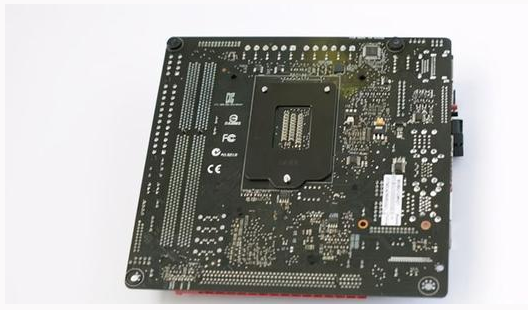one An overview of the
Multilayer PCB is designed for better electromagnetic compatibility. .Proper stacking helps to mask and suppress EMI.
two Multilayer PCB design fundamentals
Emc analysis of multilayer PCB can be based on Kirchhoff's law and Faraday's law of electromagnetic induction.

According to the above two laws, the following basic principles should be followed in the layering and stacking of multi-layer printed boards:
1. The power supply plane should be close to the grounding plane as far as possible, and should be under the grounding plane.
A case, is one of the common way, S1 is A better wiring layer. S2. But the power plane impedance is poor. Pay attention to the influence of S2 on S3 layer when wiring.
B, S2 layer is the best wiring layer, S3 layer. The power plane impedance is good.
C case, this case is the case of six boards, S1, S2, S3 are good wiring layer. The power plane impedance is good. The fly in the ointment is the wiring layer with the first two cases of a layer less.
In case D, the performance of six-layer boards is better than those of the first three, but the wiring layer is less than those of the first two. This is mostly used in backplanes.
2. Wiring layer should be arranged adjacent to the image plane layer.
3. Power supply and formation impedance. Where, the power supply impedance Z0= where, D is the spacing between the power supply plane and the ground plane. W is the area between the planes.
(4) Ribbon lines are formed in the middle layer and microstrip lines are formed on the surface. They have different properties.
(5) Important signal lines should be close to the stratum.
3. Stacking and layering of PCB board
1. Two-layer board. This board can only be used for low speed designs. EMC is poor.
2. Four layers. In the following order of layers. The advantages and disadvantages of different laminations are explained below.
Note: S1 signal wiring layer 1, S2 signal wiring layer 2; GND Ground POWER Layer
Case A, it should be one of the four layers. Because the outer layer is the stratum, it has a shielding effect on EMI. At the same time, the power supply layer is reliable and close to the stratum, so that the internal resistance of the power supply is small and the results are obtained. However, this situation cannot be used when the board density is relatively large. Because the integrity of the layer is not guaranteed, the signal of the second layer will be worse. In addition, this structure can not be used in the case of large power consumption of the whole board.
Case B is the way we usually use it. From the structure of the board, it is not suitable for high-speed digital circuit design. It is difficult to maintain low power impedance in this structure. Take a plate 2 mm as an example: Z0=50ohm. To line width of 8mil. Copper foil thickness is 35цm. So the signal layer and the middle of the formation is 0.14mm. The formation and power layer are 1.58mm. This greatly increases the internal resistance of the power supply. In this kind of structure, because the radiation is to the space, shielding plate is needed to reduce EMI.
C. case, mass of signal line on S1 layer. S2. EMI shielding. But the power supply impedance is large. This board can be used when the power consumption of the whole board is high and the board is an interference source or adjacent to the interference source.
If there are 6 signal layers in A ten-layer board, there are A, B, C three stacking sequence. A is, C is next, and B is worse. Other conditions, not listed, are worse than these. In case A, S1 and S6 are better wiring layers. S2, S3, S5. The distance between THE POWER layer and the GND layer is determined by the distance between S5 and the POWER layer. This may not guarantee the POWER plane impedance of GND layer and POWER layer. D cases should be said to be the lamination sequence of comprehensive performance in ten layers of boards. Each signal layer is an excellent wiring layer. E and F are used for backplanes. Among them, F has a better shielding effect on EMC than E. The disadvantage is that the two signal layers are connected, so attention should be paid to the wiring.
In a word, PCB layering and lamination is a relatively complex matter. There are many factors to consider. But we should keep in mind the key elements that are needed for the functionality we want to accomplish. In this way, we can find a PCB layering and stacking sequence that meets our requirements.